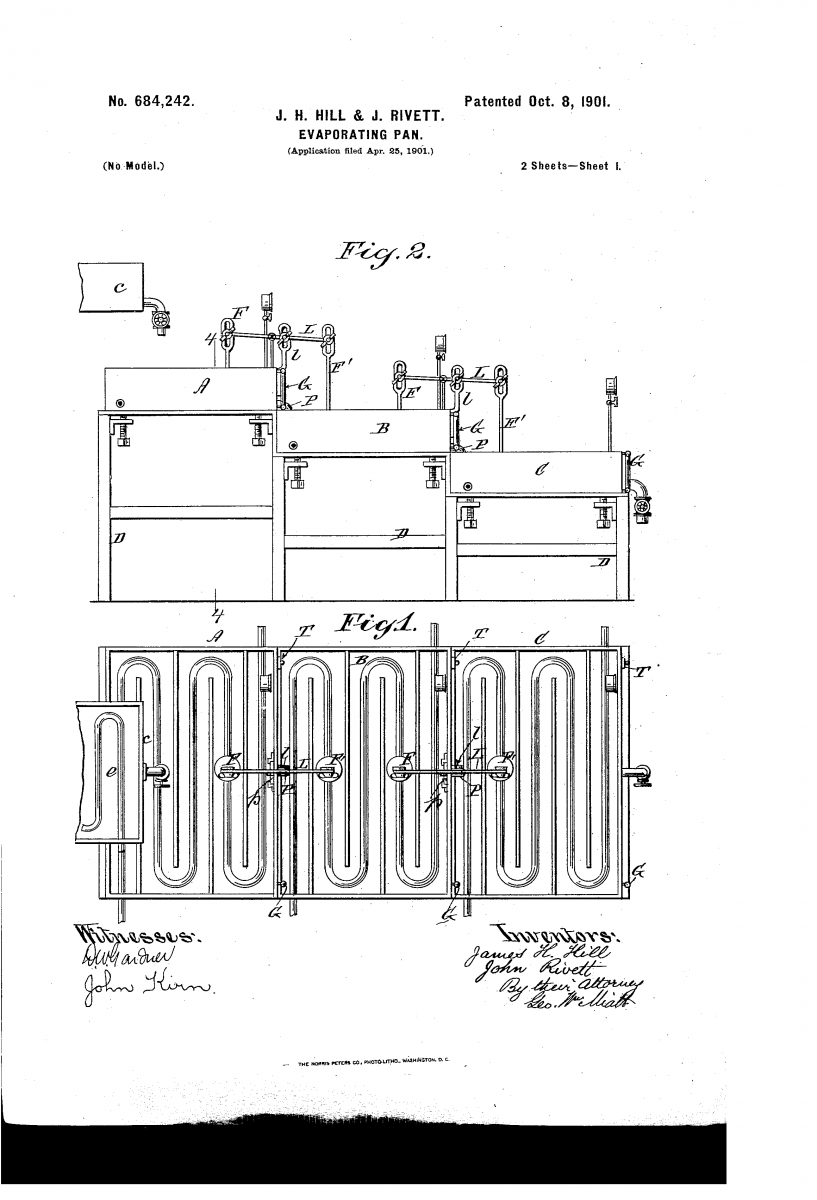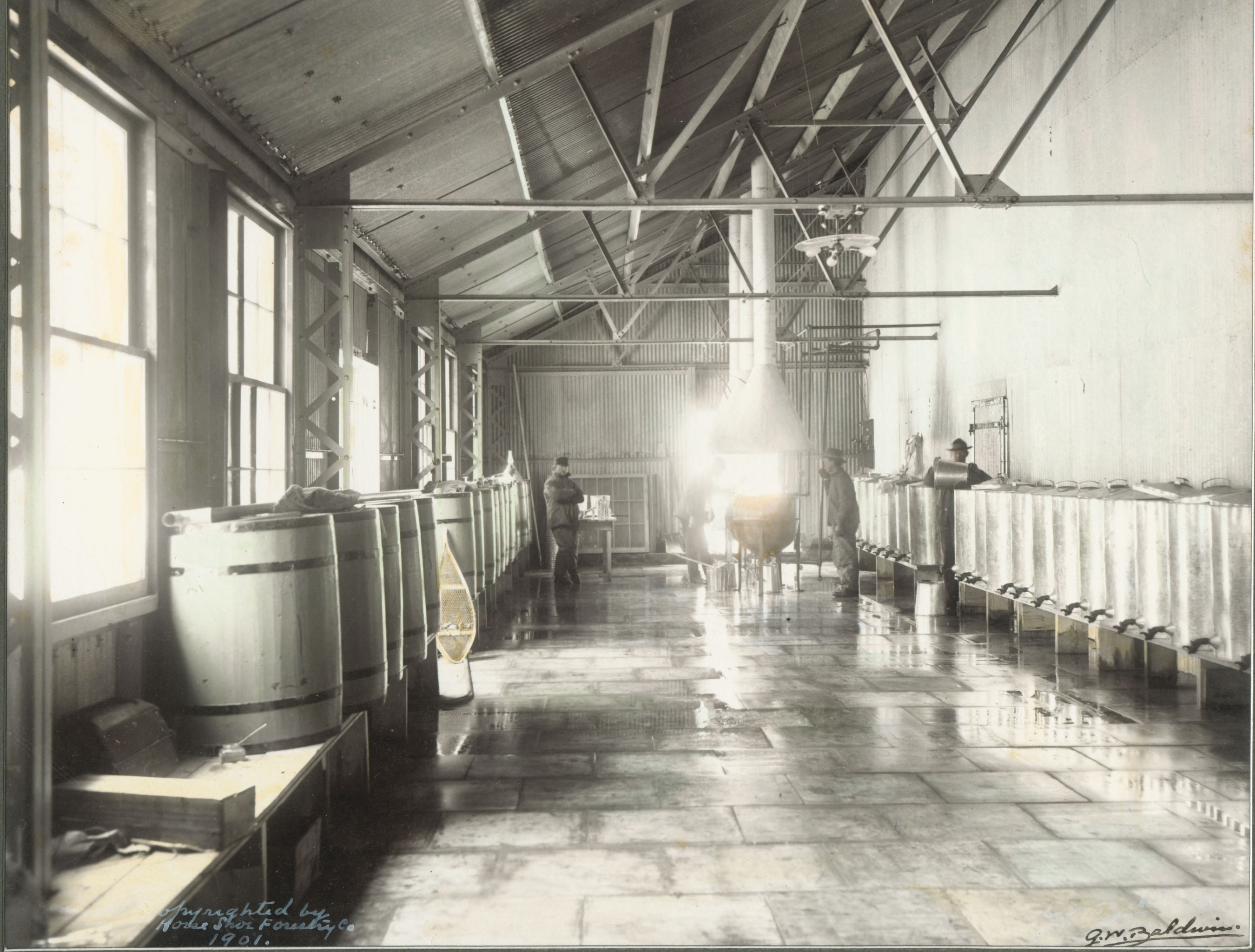
Nature and history connect
Most people have their own special place - a place where they gravitate to escape the nuances of everyday life. It might be a bench at your local park, a grassy spot with a stellar view, or even a seat at your favorite coffee joint. Wherever it might be, it probably provides you with a sense of calmness on a day of turbulence, a place for reflection on a day of tough decisions, and a place of inspiration when you are in dire need of a new perspective.
For me, that place is Horseshoe Lake. Whether it be some time sitting by the water alone with my thoughts, biking to Low's Upper Dam, hiking up Low's Ridge, or paddling the Bog River to Hitchens Pond — when I'm exploring (or relaxing) at and around Horseshoe Lake, I feel as though the weight of the world is completely off my shoulders (even if only for a couple of hours).
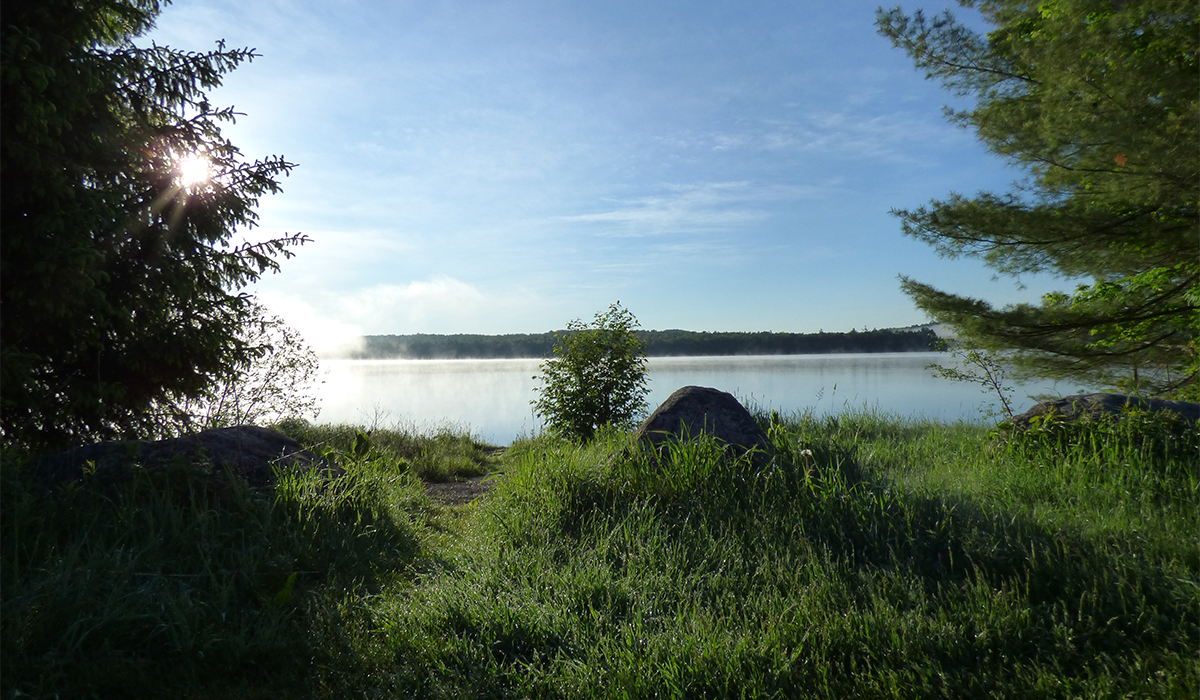
But what inspires me most about Horseshoe Lake isn't simply the beauty (which trust me there is plenty of) or the opportunity for adventure (which again there is no shortage). What really inspires me are the activities that unfolded here over a century ago, when inventor and entrepreneur A. A. Low stretched his creativity to the limits.
Welcome to Horseshoe Lake
Circa 1892-1908
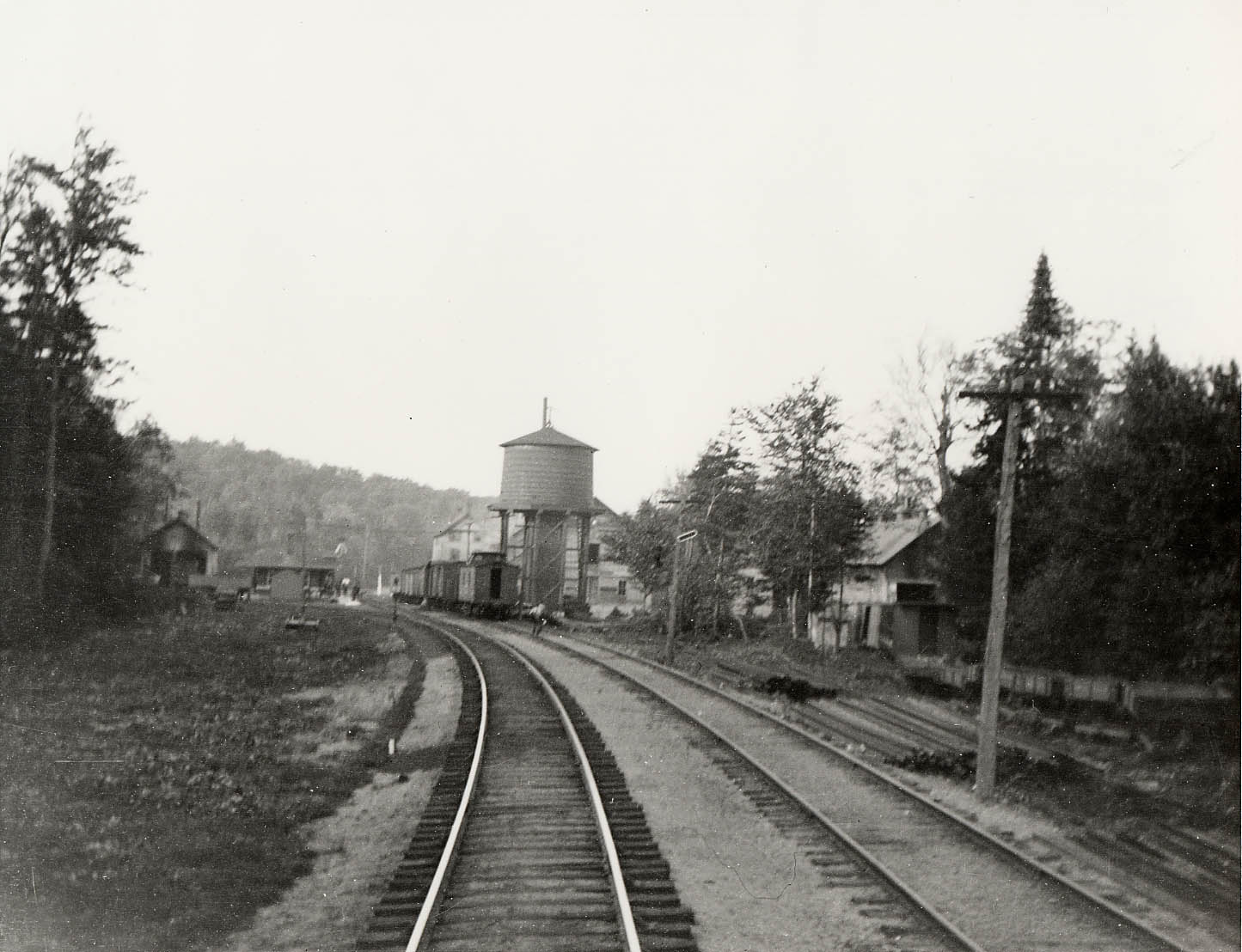
In the early 1890s Abbot Augustus Low (known today as A.A. Low, but at the time he often went by "Gus") began to acquire property at Horseshoe Lake in the Town of Piercefield. At the time, it was not uncommon for individuals or companies to acquire large tracts of land in the Adirondacks for building their personal summer estate or for establishing a logging company, however the scale and ingenuity of this project stood apart. Low had acquired over 46,000 acres of land which encompassed that of Horseshoe Lake and on to the Bog River.
Building a town in the middle of nowhere...
Once the land was acquired, one of Low's first orders of business was to get a train stop established at Horseshoe Lake. Since the new M. & M. railroad line went straight through his property, Low built a train depot. Rather than settling for a simple station or whistle stop, he built a replica of the Garden City Depot on Long Island — complete with a ticket office, telegraph machine and facilities for freight, which he then sold to the rail line for $1. Next he moved on to the government, petitioning them to establish a US Post Office at the depot. Now that he had his lines of transportation and communication open, he was ready to build his empire.
Low began with logging. He established Horseshoe Forestry Company, which he powered by not one, but two hydro-power dams. The lower dam was built in 1903, and the second or "upper" dam was built in 1907. They not only provided power for his operations, but also served the purpose of controlling the flow of water for log drives.
But again, Low didn't stop! While he was at it he constructed two private rail lines that could transport freight from different portions of his property to the depot at Horseshoe Lake.
Maple production
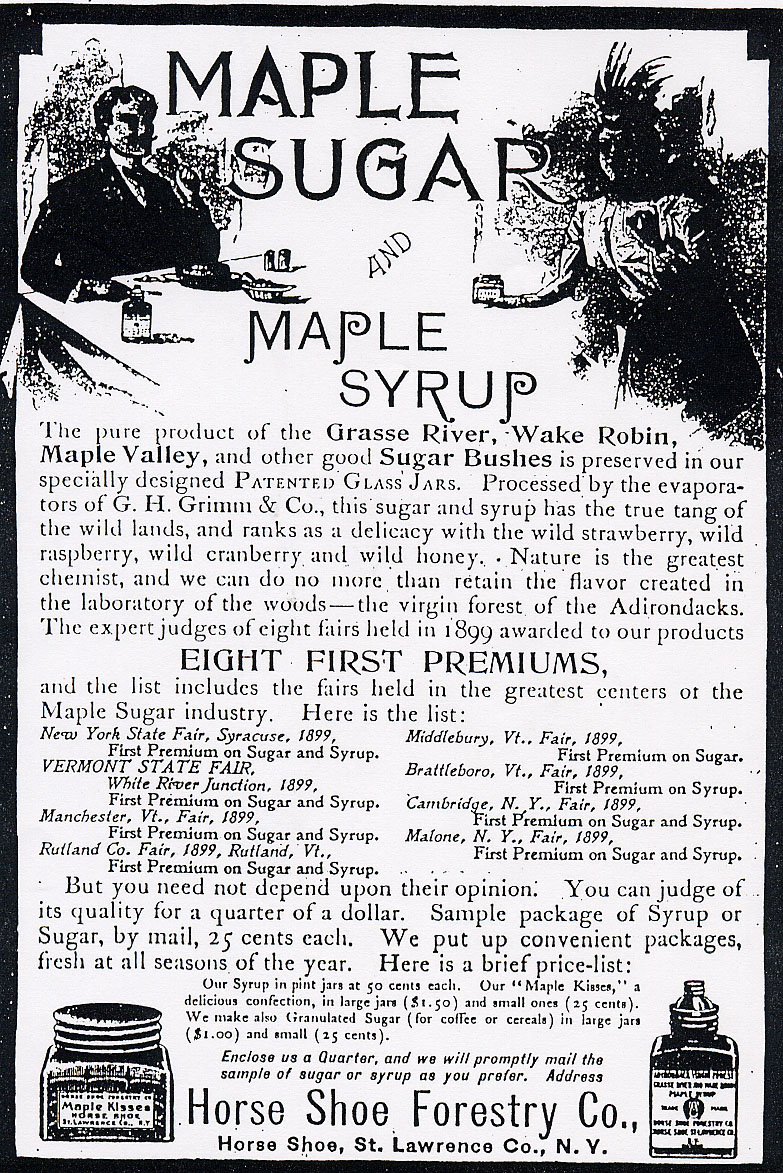
Prior to acquiring the land, Low became interested in maple and one of his major intents for the property was to begin to tap into the liquid gold. In 1898, he build the first of three sugar houses on his property. By its peak in 1907, records indicate that over 20,000 gallons of syrup were produced, making Horseshoe Forestry Company the world's largest sugar bush at the time. Accomplishing this feat is where some of Low's real ingenuity came into play. See, Abbot Augustus Low was an inventor, at the time of his death he held second place for the number of US Patents (Thomas Edison being number one). Many of Low's patents have to do with maple. From sap pale lids to the first apparatus to granulate maple sugar, Low was at the forefront of modernizing the maple industry.
But Low was a smart enough business man to also surround himself with like-minded individuals. J. H. Hill and J. Rivett, two of A. A. Low's employees at Horseshoe invented the "Evaporating Pan" — the first maple sap evaporator.
Water, Wine & Preserves...
The ingenuity didn't slow down from there. Horseshoe Forestry Company used the evaporator during the off season to make berry preserves. Low produced cereal and grits as well as elderberry, wild, cherry & grape wine. But, surprisingly, water was another big seller. Bottled spring water sound like something that is just a modern day commodity? Nope! A. A. Low was bottling "Virgin Forest Water" and shipping it to New York City via train in its patented, square, returnable bottle.
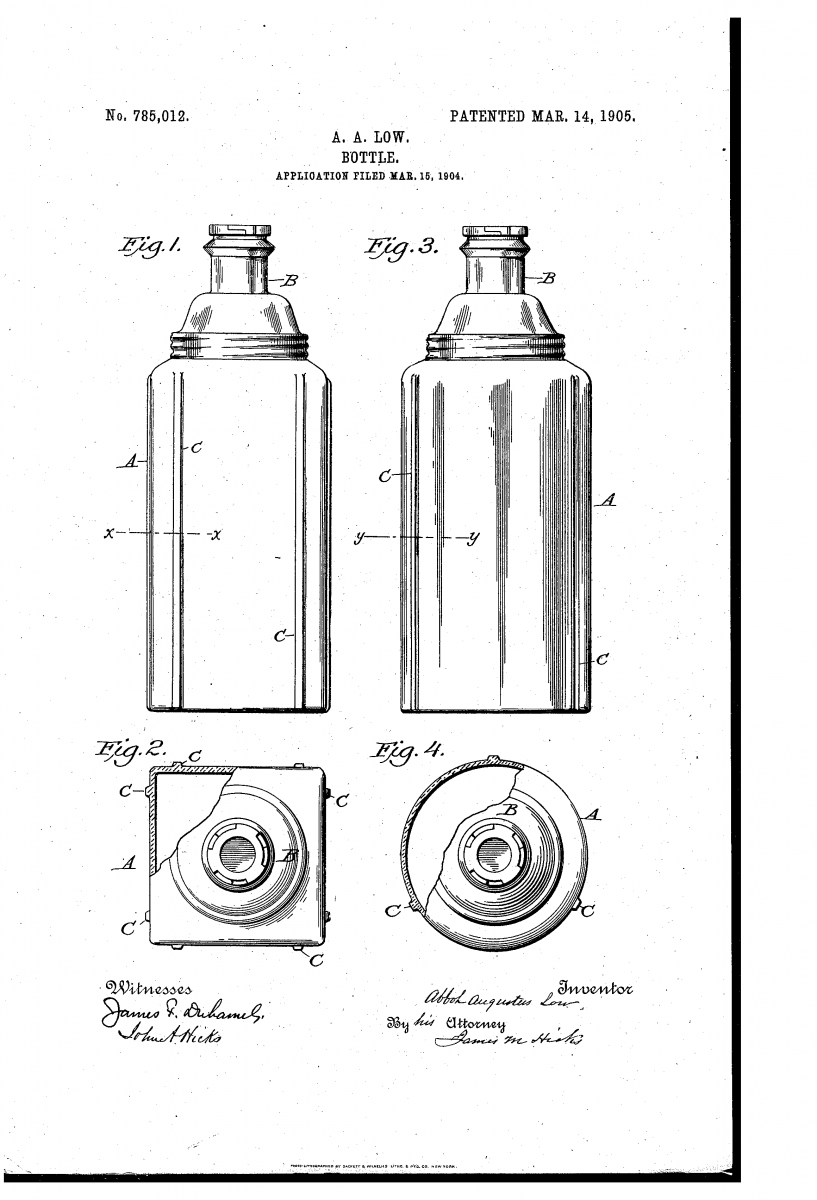
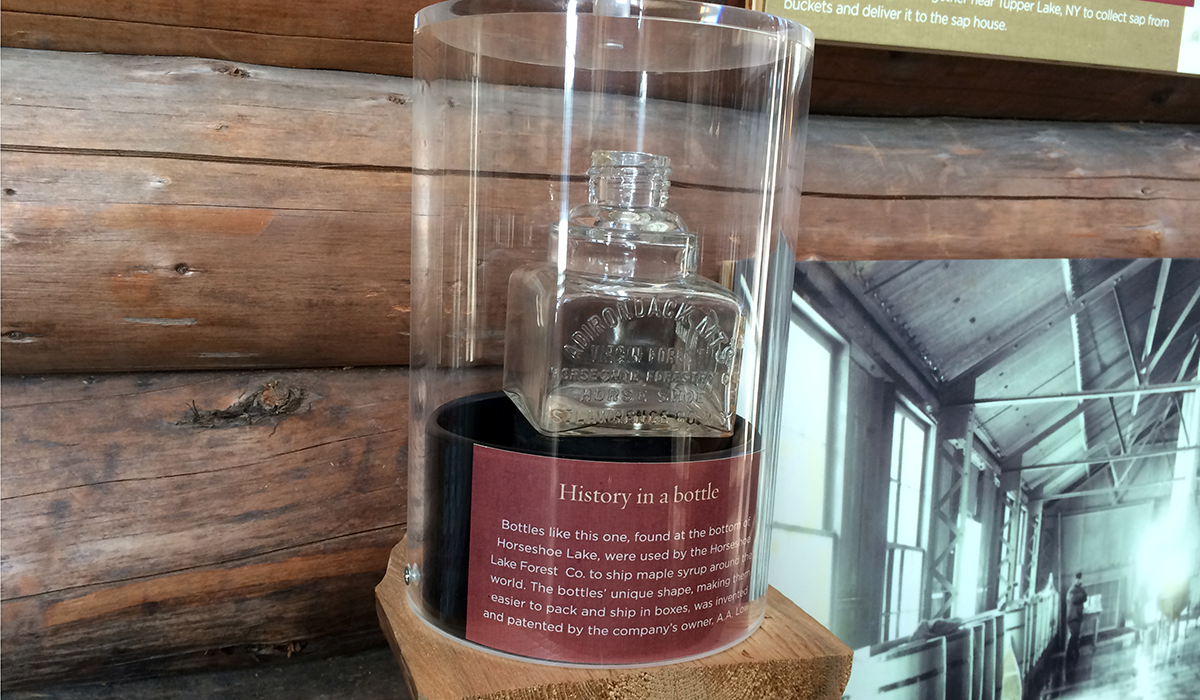
More inventions?
Low's inventions didn't simply end with maple and packaging advancements. He patented nearly 200 different ideas. Most are of mundane items such as bottle caps, engine pieces, etc. But mixed in there are some truly innovative ideas including that of the first-known paper shredder (or what he called the Waste-paper receptacle in patent number 929,960). While the item never went to market, his forethought of the need to dispose of legal documents was well ahead of its time. The patent reads, "My invention relates to the provision of improved means for disposing of waste paper and is designed more particularly for use in offices and other places where not only the collection and storage of waste paper is desirable, but also its cancelation or mutilation in such manner as to render it unavailable or unintelligible for re-use or for information."
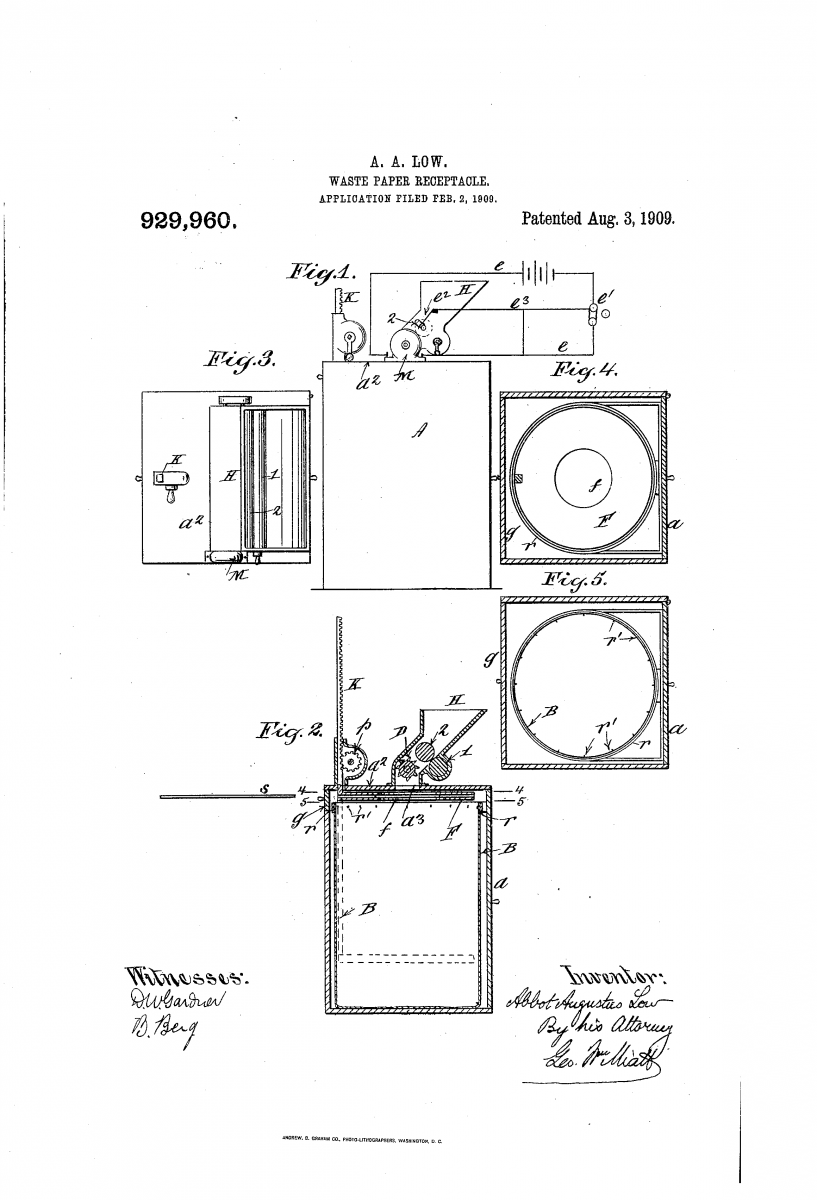
He also created an automated ticket canceling machine that would punch holes through tickets, a trash compactor which he called "apparatus for reducing and packing waste," a version of a telephone, and many other items.
Low's Legacy
Today, very little remains of Low's Empire. After devastating forest fires brought on by sparks from the M & M locomotive burned through most of Horseshoe Forestry Company land, combined with allegations (later proved wrong) from the State that the flooding from Low's Upper Dam caused flooding on State Land, Low returned to Brooklyn and liquidated the company.
If you are to explore around Horseshoe and The Bog River, you will still find many signs that indicate that Low was once here. The two dams are still intact and provide awesome paddling, fishing and camping opportunities on the two man-made bodies of water: Hitchens Pond and Low's Lake. The stone foundation & fireplace from the three-story boarding house near Hitchens Park is just one of the many cool foundations, stone walkways, and planted wildflowers that greet you at this remote location.
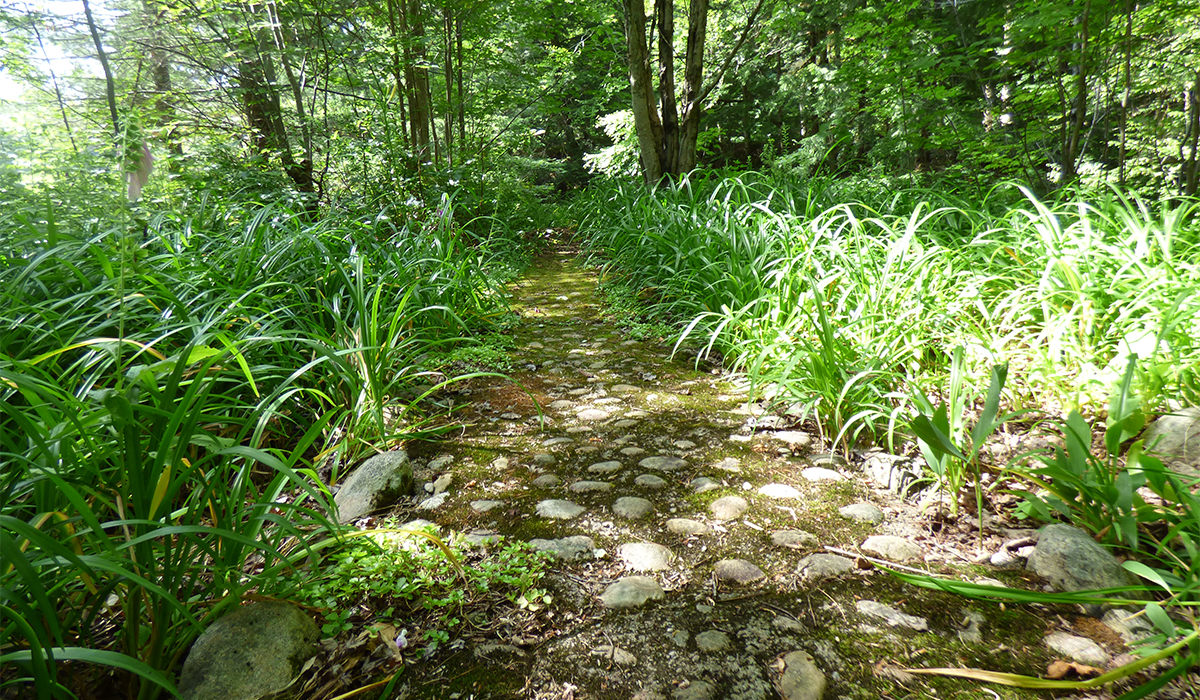
Equally inspiring as the story of A. A. Low & Horseshoe Forestry Company is the power of nature that is evident here. There is little to no evidence of the devastating forest fires that swept through the area. The stone foundations are slowly being overgrown to create a beautiful statement of man vs. nature.
Learn More!
As the spring begins to creep into the Adirondacks and sap starts flowing once again, The Wild Center begins their annual Maple Program as they host Maple Weekends. Year-round, you will find The Center's permanent maple exhibit in the lean-to off of the Big Wolf Great Hall. While in town, head out to Horseshoe Lake and spend some time exploring the land that was once Low's Great Empire — who knows, maybe you will see me there.
* Header Image 1: The Horseshoe Forestry Company's maple evaporator room. Photo from the Horseshoe Lake and spend some time exploring the land that was once Low's Great Empire — who knows, maybe you will see me there.
* Header Image 1: The Horseshoe Forestry Company's maple evaporator room. Photo from the Adirondack Museum collection.
** Header Image 2: A man who is believe to be Abbot Augustus Low, monitors the sap flow at Horseshoe Lake. Photo from the Adirondack Museum collection.
This week in related innovative ADK news:
Rare Bard discovered in Blue Line.
Things you can’t get done at the other place.
">Adirondack Museum collection.
** Header Image 2: A man, who is believed to be Abbot Augustus Low, monitors the sap flow at Horseshoe Lake. Photo from the Adirondack Museum collection.
This week in related innovative ADK news:
Rare Bard discovered in Blue Line.
Things you can’t get done at the other place.

